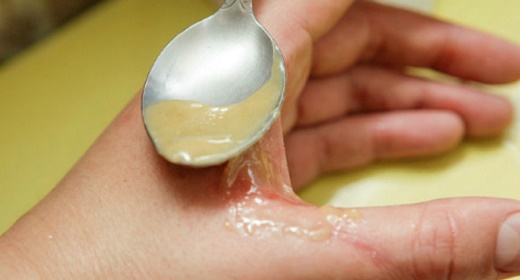Cell and animal studies suggest that boosting nicotinamide mononucleotide (NMN) levels can alleviate or even reverse age-related conditions by stimulating NAD+ metabolism, but will these effects translate to humans?
As the human lifespan continues to increase worldwide, so is the number of people seeking solutions for age-related conditions. Nicotinamide mononucleotide (NMN) is one of the main precursors of nicotinamide adenine dinucleotide (NAD+) — an essential enzyme for various critical cell functions, including metabolism, DNA repair, cell growth and survival. Impressive results in cell and animal studies, as well as in clinical trials, are fuelling a multimillion-dollar market for NMN supplements.
“In rodents, NMN ameliorates the detrimental effects of NAD+ reduction with age, and it significantly improves several metabolic functions,” says Samuel Klein, a doctor and nutritional specialist at Washington University School of Medicine in St Louis, United States. “This has led to NMN being sold worldwide as a diet supplement, with very little data to support that it has beneficial effects in people.”
NMN-containing healthcare products and cosmetics are becoming increasingly popular in North America, Europe and China. The global NMN market was valued at US$253 million in 2020 and is projected to reach US$386 million by the end of 20271. But what evidence is there that NMN has anti-ageing effects in humans? This article looks at some studies published since 2015 that have assessed the effects of NMN on human metabolism and skin ageing.
Why is NAD+ important?
NAD+ is found in abundance in mitochondria, the cell cytoplasm and nucleus. It is required for the addition of poly-ADP ribose to proteins and the deacetylating activity of sirtuin enzymes, which are critical for regulating cell growth, energy metabolism, stress resistance, inflammation, circadian rhythm and neuronal function2.
NAD+ is synthesised from sources that include NMN, tryptophan, nicotinic acid, nicotinamide riboside and nicotinamide. NAD+ precursors are found in small amounts in natural foods, such as cow’s milk, vegetables and meats. These precursors enter cells by different means: NMN is probably transported across cell membranes by the Slc12a8 transporter3, nicotinamide riboside enters cells via nicotinamide riboside transporters4, and nicotinamide diffuses into cells due to its small size.
The uptake of NAD+ precursors varies between tissues, but a decline in NAD+ with age is observed across multiple tissues (see image). The average NAD+ concentration in human samples is several times lower in adults than in newborns5. This fall in NAD+ levels has been attributed to reduced synthesis and increased consumption, with the latter including degradation by NADase CD38 (ref. 6) and poly(ADP-ribose) polymerase (PARP).
Reduced NAD+ levels are associated with a wide range of the hallmarks of ageing, from wrinkles to metabolic disorders and neurodegenerative diseases. Moreover, various lifespan-extending metabolic manipulations in mice, such as exercise, caloric restriction and regular sleeping patterns, work in part by increasing NAD+ levels, providing further support to the idea that stimulating NAD+ metabolism could help to extend human healthspan and, potentially, lifespan7.
Researchers and drug developers are exploring three main approaches to boosting NAD+ levels: supplementation with NAD+ precursors (primarily NMN and nicotinamide riboside); activation of NAD biosynthetic enzymes; and inhibition of NAD+ degradation. While all three strategies have shown health benefits in mouse models of human diseases, only supplementation with NAD+ precursors is currently being explored in humans.

A precursor of nicotinamide adenine dinucleotide (NAD+), nicotinamide mononucleotide (NMN) has been attracting interest as a potential way to reverse the aged-related decline of NAD+ in the body. Interest in the compound is growing rapidly as indicated by the annual search results for “nicotinamide mononucleotide” on Google Scholar.
Benefits of boosting NAD+ metabolism in animal models
Stimulating NAD+ metabolism with NMN or nicotinamide riboside extends healthspan and mitigates premature ageing diseases in mice. Long-term (12 months) oral administration of NMN suppresses age-associated weight gain, enhances energy metabolism, improves insulin sensitivity and prevents age-linked changes in gene expression8. Following treatment, the metabolism and energy levels of older mice resemble those of younger mice.
Evandro Fei Fang, a molecular gerontologist leading an anti-ageing laboratory at the University of Oslo, Norway, has been examining the effects of treatments that increase intracellular NAD+ on animal models of accelerated ageing diseases such as ataxia-telangiectasia and Werner syndrome, and neurodegenerative diseases, including Alzheimer’s disease. “NAD+ participates in a broad range of cellular pathways linked to neuronal survival and function,” Fang says. With Vilhelm Bohr at the National Institute on Ageing, Baltimore, United States, Fang’s team has shown that by stimulating neuronal DNA repair and selectively degrading damaged mitochondria via mitophagy, NMN can protect neurons against pathological aggregated proteins, such as p-tau, and improve memory in animal models of Alzheimer’s disease as well as improve healthspan and lifespan of animal models exhibiting accelerated ageing diseases9. These results could indicate the importance of maintaining mitochondrial quality for healthy ageing and NMN as a strategy to prevent mitochondrial dysfunction.
However, as Fang notes, the effects of NMN in neurons are not straightforward. “It mightn’t be wise to increase cellular entry of NMN, as an increased intracellular NMN/NAD+ ratio activates SARM1, an executor of axon degeneration.” Further research into the ‘good’ and ‘bad’ effects of NMN in neurons is required to tease out any potential clinical benefits.

Nicotinamide adenine dinucleotide (NAD+) levels tend to decrease with age and there is evidence that this reduction gives rise to ageing-related disorders. © 2021 Springer Nature
From preclinical to clinical testing of NMN
Only in the past few years have researchers started to examine the effects of NMN in controlled, randomized trials to see if the effects observed in cells and animal models translate to humans. In 2016, researchers at Keio University School of Medicine initiated the world’s first clinical study to assess the safety of NMN in humans (UMIN000021309). They found that in ten healthy Japanese men, a single oral administration of NMN (between 100 and 500 mg) was safe and effectively metabolized without causing any significant adverse effects10. Participants fasted overnight prior to consuming the NMN capsules and then consumed only water for the ensuing five hours until they underwent physiological examinations.
All doses were well tolerated; the researchers found no gastrointestinal issues or changes to heart rate, blood pressure, oxygen saturation, body temperature, ophthalmic parameters or sleep quality. Furthermore, analysis of blood and urine samples indicated no changes after NMN consumption, except for increases in serum bilirubin levels and reductions in serum creatinine, chloride and blood glucose levels. These changes were all within normal ranges, leading the researchers to conclude that administering up to 500 mg of NMN is safe and a feasible strategy for mitigating ageing-related conditions in humans.
Encouraged by these findings, Klein and colleagues evaluated the metabolic effects of NMN in women over 55 years of age11. “We chose postmenopausal women because rodent studies indicated that females are more responsive than males and that older animals are more responsive than young ones,” he explains.
In this small clinical trial, 13 postmenopausal women with prediabetes who were overweight or obese took 250 mg of NMN orally daily for 10 weeks, while another 12 were given a placebo every day over the same period. “Except for an improvement in insulin muscle sensitivity, none of the metabolic benefits seen in the rodent models translated to humans,” says Klein.
Although NMN improved glucose uptake by muscles in response to insulin, other effects that would be expected from increased insulin sensitivity, such as lower blood glucose or blood pressure, a decrease in liver fat and skeletal muscle fatigue, were not observed. There are several possible reasons for this. Apart from intrinsic differences between rodents and humans, the dose or duration of treatment may not have been adequate, Klein explains.
“Finding an effect in muscle tissue is very interesting and does demonstrate that NMN is not inert,” says Klein. “But it’s premature to make any clinical recommendations based on the results from our study. NMN needs to be tested in more people and for longer periods of time to determine if it has anti-ageing effects in humans,” he cautions.
Interestingly, neither clinical study found evidence of increased NAD+ concentration after NMN therapy. They did, however, find an increase in NAD metabolic products, which is indicative of faster turnover.
These studies did not report any adverse effects, but the doses of NMN tested in people (up to 500 mg) were a lot smaller than those used in mice (typically around 300 mg per kilogramme; for a person weighing 75 kg, this would equate to 22.5 g). “Neither a single dose nor a daily dose over the course of ten weeks had any adverse effect,” says Klein, while pointing out that these studies were conducted on a small number of people. “If an adverse effect occurs in 1 in 1,000 people but we only examine 25, it is possible to miss it,” he warns. “Nonetheless, I’m not aware of any reports of adverse effects of NMN in people despite its worldwide use.”
NMN and skin treatments
NMN has also emerged as a potential solution to skin ageing. A recent study showed that NMN combined with intestinal bacteria Lactobacillus fermentum TKSN041 protected mouse skin from damage caused by ultraviolet B irradiation12, the main cause of premature skin ageing. The effect was observed despite NMN being delivered intragastrically because it cannot pass through the skin barrier due to its high water solubility.
Yoshihiro Uto at Tokushima University in Japan has been working on a skin-penetration technology (a nanoparticle drug delivery system) that allows NMN to enter human skin cells and observing the effects of NMN on fibroblasts and keratinocytes. “We’re investigating whether using our particle delivery system to administer NMN to skin cells can suppress cell ageing and activate cell division, mitochondrial activity and hyaluronic acid production,” he says.
Hyaluronic acid is a naturally occurring sugar molecule found in the skin, eyes and synovial fluid of the joints. It binds water, helping to retain moisture and improve skin elasticity and firmness. Uto and colleagues have developed a cream containing NMN and a proprietary system that is intended to stimulate autophagy, which eliminates damaged or unneccessary cellular components. They are testing its effectiveness on middle-aged people.
The road ahead
Various challenges face the development and delivery of NMN-containing products. NMN is stable in water at room temperature and is rapidly absorbed when given by oral gavage to mice, resulting in a rapid increase in plasma NMN13. However, there are variations between tissues14, and there is evidence that the gut microbiome could interfere with NMN metabolism and prevent gastrointestinal uptake when it is administered orally15.
Experts agree that further studies on the regulation of NAD+ homeostasis and the effects of NAD+ and its precursors on the epigenome, transcriptome, proteome and metabolome using high-throughput methods are indispensable. In addition, more clinical trials are needed to rigorously establish therapeutic and toxic dose ranges of NMN. Such trials should include both males and females and be conducted in healthy and disease states.
Unfortunately, because NMN is already being sold as a food product rather than a heavily regulated therapeutic drug, there is often little incentive to carry out these trials. “These studies are not cheap,” says Klein. “Funding from government grants, foundations or industry is needed to conduct additional studies in people to further evaluate the potential therapeutic efficacy and safety of NMN-containing products marketed as having anti-ageing effects are safe for consumers.”
Klein, Fang and others are continuing to work on clinical trials of the safety of the long-term administration of NMN or nicotinamide riboside and its effect on healthy individuals. Among the NMN trials that are ongoing or are yet to publish results is a phase II study (UMIN000030609) led by the Keio University School of Medicine in Japan, looking at the pharmacokinetics and metabolites of NMN, and its long-term effects on glucose metabolism in healthy adults. Another, conducted at Hiroshima University, is examining the effect of long-term NMN intake on hormone levels in healthy individuals (UMIN000025739). The results of these studies will deepen our understanding of the potential of NAD+-boosting therapies for expanding healthy longevity.
“Proving the effects of NMN in humans will ensure that NMN-containing products are appropriately regulated and labelled so that their potential benefits can be realized in more people,” Uto concludes.










































